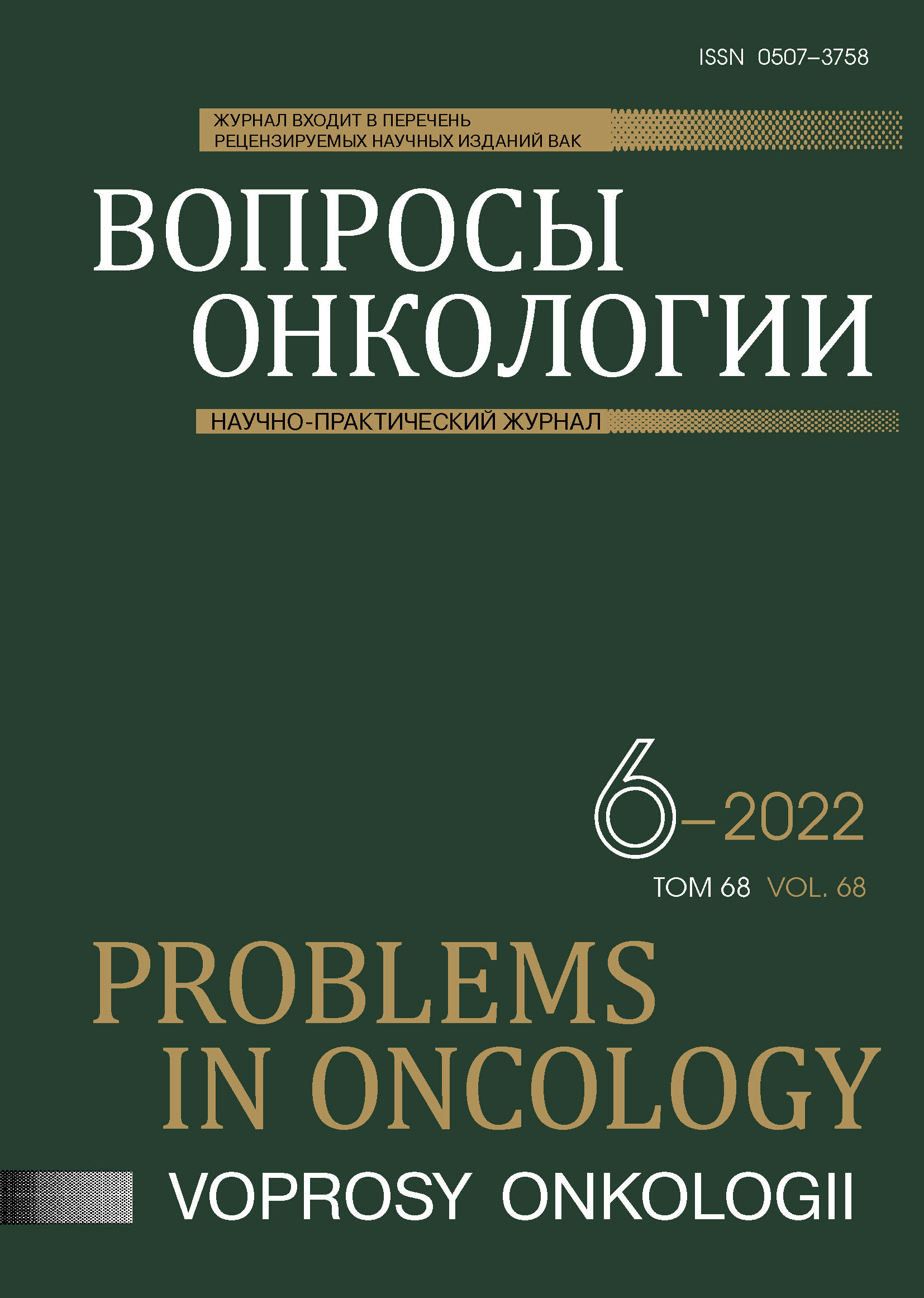Abstract
Introduction. А decade ago, the artificial intelligence (AI), in particular, neural networks (NN), as a diagnostic opportunity in medical practice, seemed only a distant prospect. Nowadays, the AI is an increasingly popular and daily improving approach in all aspects of clinical and fundamental medicine. Purpose of the research: development of NN and training it to recognize four types of benign melanocytic skin lesions, and integration of the AI into a mobile application.
Material and Methods. Clinical and dermatoscopic examination of skin lesions was carried out in 600 pediatric patients. Tumors were removed and pathomorphologically verified in 65 cases. Dermal nevus was found in 43% (n=28), compound nevus ― in 33.8% (n=22), pyogenic granuloma ― in 10.8% (n=7), Spitz-nevus ― in 6.2% (n=4), blue nevus ― in 3.1% (n=2), and melanoma ― in 3.1% (n=2). Seven patients with pyogenic granulomas and two patients with melanoma were excluded from the test set during NN training. Augmentation has been carried out in the training set, therefore, the database has been increased from 600 images to 1800. The NN has been written in the machine language Python with the use of the machine learning framework TensorFlow 2.0. The network architecture is based on the pre-trained model «EfficientNet B7» with the use of «supervised learning» paradigm.
Results. After a period of learning, an accuracy up to 83% in determining /of the four types of melanocytic nevi has been achieved on the test set. Despite the limited sampling, sensitivity of the method, depending on the type of the lesion, was 100% (for blue nevus), 73% (compound nevus), 93% (dermal nevus), and 75% (Spitz-nevus);& The specificity was 98, 94, 82 and 98% respectively. Along with development and learning, the AI has been integrated into the mobile appication «KIDS NEVI» to provide practical usiage of the method.
Conclusion. The AI has demonstrated high potential as an auxiliary method for diagnosing melanocytic skin tumors in children and adolescents. Significant achievements in informative value have been presented despite the limited sample size.
References
Zalaudek I, Hofmann-Wellenhof R, Kittler H et al. A Dual Concept of Nevogenesis: Theoretical Considerations Based on Dermoscopic Features of Melanocytic Nevi // J Dtsch Dermatol Ges. 2007;5(11):98–92. doi:10.1111/j.1610-0387.2007.06384
Schaffer J. Update on melanocytic nevi in children // Clin Dermatol. 2015;33(3):368–86. doi:10.1016/j.clindermatol.2014.12.015
Haliasos H, Zalaudek I, Malvehy J et al. Dermoscopy of Benign and Malignant Neoplasms in the Pediatric Population // Semin Cutan Med Surg. 2010;29(4):218–31. doi:10.1016/j.sder.2010.10.003
Кулева C.А., Хабарова Р.И. Диагностическая информативность дерматоскопического паттерна новообразований кожи у детей и подростков // Российский журнал детской гематологии и онкологии. 2021;8(4):14–19. doi:10.21682/2311-1267-2021-8-4-14-19 [Kulyova SA, Khabarova RI. Diagnostic informativeness of the dermatoscopic pattern of skin neoplasms in children and adolescents // Russian Journal of Pediatric Hematology and Oncology. 2021;8(4):14–19 (In Russ.)]. doi:10.21682/2311-1267-2021-8-4-14-19
Currie G, Elizabeth H, Rohren E. Machine Learning and Deep Learning in Medical Imaging: Intelligent Imaging // J Med Imaging Radiat Sci. 2019;50(4):477–487. doi:10.1016/j.jmir.2019.09.005
Мерабишвили В.М. Злокачественная меланома. Эпидемиология, аналитические показатели эффективности деятельности онкологической службы (популяционное исследование) // Вопросы онкологии. 2017;63(2):221–233 [Merabishvili VM. Malignant melanoma. Epidemiology, analytical indicators of the effectiveness of the oncological service (population / population-based study) // Voprosy oncologii. 2017;63(2):221–233].
Барчук А.А., Арсеньев А.И., Беляев А.М. и др. Эффективность скрининга онкологических заболеваний // Вопросы онкологии. 2017;63(4):557–567 [Barchuk AA, Arseniev AI, Belyaev AM et al. Efficiency of cancer screening // Voprosy oncologii. 2017;63(4):557–567 (In Russ.)].
Ferrari A, Brecht I, Gatta G. et al. Definding and listing very rare cancers of periadric age: consensus of the Joint Action on Rare Cancers in cooperation with the European Cooperative Study Group for Pediatric rare tumors // Current Perspective. 2019;110(1):120–126. doi:10.1016/j.ejca.2018.12.031
Zukotynski K, Gaudet V, Uribe CF. Machine Learning in Nuclear Medicine: Part 2-Neural Networks and Clinical Aspects // J Nucl Med. 2021;62(1):22–29. doi:10.2967/jnumed.119.231837
Le Cun Y, Bengio Y, Hinton G. Deep Learning // Nature. 2015:521:436–444. doi:10.1038/nature14539
Барчук А.А., Подольский М.Д., Беляев А.М. и др. Автоматизированная диагностика в популяционном скрининге рака легкого // Вопросы онкологии. 2017;63(2):215–220 [Barchuk AA, Podolsky MD, Belyaev AM et al. Automated computer-assisted diagnostics in population-based lung cancer screening // Voprosy oncologii. 2017;63(2):215–220 (In Russ.)].
Shimizu H, Nakayama KI. Artificial intelligence in oncology // Cancer Sci. 2020;111:1452–1460. doi:10.1111/cas.14377
Bhinder B, Gilvary C, Madhukar NS, Elemento O. Cancer Discov. 2021;11(4):900–915. doi:10.1158/2159-8290
Tschandl P. Artificial intelligence for melanoma diagnosis // Ital J Dermatol Venereol. 2021;156:289–99. doi:10.23736/S2784-8671.20.06753

This work is licensed under a Creative Commons Attribution-NonCommercial-NoDerivatives 4.0 International License.
© АННМО «Вопросы онкологии», Copyright (c) 2022
